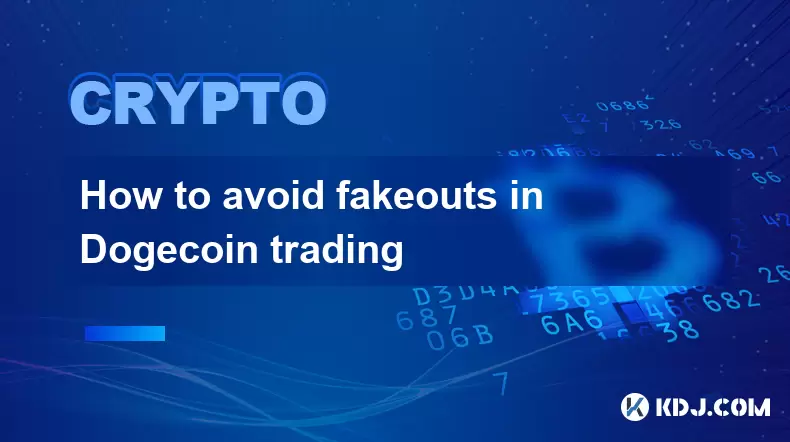-
 Bitcoin
Bitcoin $108,879.8879
0.11% -
 Ethereum
Ethereum $2,565.0410
0.07% -
 Tether USDt
Tether USDt $1.0001
0.00% -
 XRP
XRP $2.2915
-0.14% -
 BNB
BNB $660.7569
-0.20% -
 Solana
Solana $151.1919
-0.78% -
 USDC
USDC $1.0000
0.00% -
 TRON
TRON $0.2869
-0.14% -
 Dogecoin
Dogecoin $0.1698
-0.98% -
 Cardano
Cardano $0.5832
-0.83% -
 Hyperliquid
Hyperliquid $38.2151
-3.65% -
 Sui
Sui $2.8819
-1.10% -
 Bitcoin Cash
Bitcoin Cash $498.0045
0.53% -
 Chainlink
Chainlink $13.3860
-1.54% -
 UNUS SED LEO
UNUS SED LEO $9.0541
-0.22% -
 Stellar
Stellar $0.2535
1.00% -
 Avalanche
Avalanche $18.0791
-0.65% -
 Shiba Inu
Shiba Inu $0.0...01185
0.83% -
 Toncoin
Toncoin $2.7669
-1.12% -
 Hedera
Hedera $0.1575
-1.49% -
 Litecoin
Litecoin $86.3735
-1.06% -
 Monero
Monero $316.7337
-1.19% -
 Dai
Dai $1.0000
0.01% -
 Polkadot
Polkadot $3.3611
-0.82% -
 Ethena USDe
Ethena USDe $1.0002
0.01% -
 Bitget Token
Bitget Token $4.2618
-1.76% -
 Uniswap
Uniswap $7.4587
0.85% -
 Aave
Aave $282.3607
-1.88% -
 Pepe
Pepe $0.0...01004
-0.06% -
 Pi
Pi $0.4576
-0.29%
How to avoid fakeouts in Dogecoin trading
2025/07/08 10:49

Understanding Fakeouts in Cryptocurrency Trading
In the volatile world of cryptocurrency trading, fakeouts are a common phenomenon that can mislead traders and lead to significant losses. A fakeout occurs when the price of an asset appears to break out or breakdown from a key support or resistance level but quickly reverses direction. In Dogecoin trading, these false signals can be especially misleading due to the coin’s high volatility and strong community-driven sentiment.
Traders often rely on technical analysis tools such as trendlines, candlestick patterns, and volume indicators to identify potential entry or exit points. However, manipulative market forces and large whale movements can create artificial breakouts that trap retail investors. Recognizing the signs of a potential fakeout is essential for protecting capital and improving trade accuracy.
Identifying Key Signs of a Dogecoin Fakeout
One of the most effective ways to avoid fakeouts in Dogecoin (DOGE) trading is by closely analyzing price action and volume. If the price breaks through a major resistance level but is not accompanied by a surge in trading volume, it may indicate a false breakout.
- Watch for low-volume breakouts: When Dogecoin's price moves beyond a key level without a corresponding increase in volume, it suggests weak institutional participation.
- Look at wicks and candlestick shadows: Long upper or lower wicks during a supposed breakout can signal rejection of that price level.
- Monitor retests: Genuine breakouts usually see the price retest the broken level as new support or resistance. The absence of this behavior increases the likelihood of a fakeout.
By combining these observations with other technical indicators like moving averages and Bollinger Bands, traders can better assess whether a move is legitimate or a manipulation tactic.
Using Technical Indicators to Confirm Breakouts
Technical indicators play a crucial role in filtering out fake signals in Dogecoin trading. Tools such as the Relative Strength Index (RSI), Moving Average Convergence Divergence (MACD), and On-Balance Volume (OBV) can help confirm whether a breakout has real momentum behind it.
- RSI divergence: If Dogecoin’s price makes a new high but the RSI does not, it indicates weakening bullish pressure.
- MACD confirmation: Wait for the MACD line to cross above the signal line before entering a long position post-breakout.
- OBV trends: Rising OBV during a price uptrend confirms buying pressure; stagnant or falling OBV during a rally suggests a fakeout.
These indicators should not be used in isolation but rather in combination to form a more robust trading strategy that filters out noise and focuses on high-probability setups.
Setting Up Entry Triggers and Waiting for Confirmation
Instead of rushing into trades immediately after a breakout, experienced traders often wait for confirmation candles or retests before entering positions. This approach helps avoid getting caught in a Dogecoin fakeout.
- Wait for a close above/below key levels: Don’t assume a breakout is valid until the candle closes beyond the resistance or support zone.
- Use pullbacks as entries: After a breakout, if the price pulls back to test the previous resistance as support, this can offer a safer entry point.
- Implement entry triggers: Set conditional orders that only activate after specific price behaviors, such as a second confirmation candle or a volume spike.
This disciplined method reduces emotional decision-making and aligns your trading with actual market structure rather than speculative hype.
Managing Risk and Position Sizing in Dogecoin Trading
Even with all precautions, some fakeouts will still occur. That’s why risk management is critical in Dogecoin trading. Proper position sizing and stop-loss placement can protect your account from being wiped out by a single bad trade.
- Limit risk per trade: Never risk more than 1–2% of your total trading capital on a single Dogecoin trade.
- Set realistic stop-loss levels: Place stops beyond logical support/resistance zones to avoid getting stopped out by minor price fluctuations.
- Use trailing stops: As Dogecoin moves in your favor, trailing stops can lock in profits while allowing room for normal price swings.
Risk management ensures longevity in trading, especially in unpredictable markets like Dogecoin, where fakeouts are frequent and emotions run high.
Frequently Asked Questions
Q: How do I differentiate between a real breakout and a fakeout in Dogecoin?
A: Real breakouts are typically supported by increased volume, follow-through price action, and confirmation from technical indicators like RSI and MACD. Fakeouts often lack volume, show rejection wicks, and fail to retest the breakout level.
Q: Can I use automated tools to detect fakeouts in Dogecoin trading?
A: Yes, many trading platforms offer custom scripts and alerts that monitor for volume anomalies, candlestick patterns, and indicator divergences, which can help identify potential fakeouts.
Q: Does holding Dogecoin long-term eliminate the risk of fakeouts?
A: While long-term holders may not be affected by short-term fakeouts, understanding market behavior can still help in making informed decisions about entry points and avoiding costly dips.
Q: Are fakeouts more common in Dogecoin compared to other cryptocurrencies?
A: Due to its high volatility and social media-driven nature, Dogecoin is particularly susceptible to fakeouts, especially during trending periods fueled by hype or celebrity mentions.
免责声明:info@kdj.com
所提供的信息并非交易建议。根据本文提供的信息进行的任何投资,kdj.com不承担任何责任。加密货币具有高波动性,强烈建议您深入研究后,谨慎投资!
如您认为本网站上使用的内容侵犯了您的版权,请立即联系我们(info@kdj.com),我们将及时删除。
- Bitcoin Solaris Market Launch: A New Dawn or Just Another Altcoin?
- 2025-07-08 20:30:12
- Bitcoin, Memecoin Mania, and the All-Time High Hunt: What's Next?
- 2025-07-08 20:30:12
- Byrq Coin: Scam or Savior? A Deep Dive Review
- 2025-07-08 20:50:12
- Shiba Inu's Burn Rate Bonanza: Can Crypto Burns Ignite a Price Rally?
- 2025-07-08 20:50:12
- 电信,注入和验证者:深入了解网络安全和增长
- 2025-07-08 21:10:12
- ROM:黄金时代 - 半百万预注册和加密战利品!
- 2025-07-08 21:15:12
相关百科

When to sell Dogecoin based on technical analysis
2025-07-05 19:34:43
<h3>Understanding the Basics of Technical Analysis</h3><p>Technical analysis is a method used by traders to evaluate and predict fut...

How to use the Stochastic RSI for Dogecoin
2025-07-06 03:14:46
<h3>Understanding the Stochastic RSI Indicator</h3><p>The Stochastic RSI (Relative Strength Index) is a momentum oscillator that com...

What is the best moving average for Dogecoin on the daily chart
2025-07-06 10:29:16
<h3>Understanding Moving Averages in Cryptocurrency Trading</h3><p>Moving averages are among the most widely used technical indicato...

How to set price alerts based on indicators for Dogecoin
2025-07-05 19:32:25
<h3>Understanding Price Alerts and Their Relevance to Dogecoin</h3><p>Price alerts are notifications set by traders or investors to ...

Dogecoin weekly chart analysis
2025-07-07 17:42:46
<h3>Understanding the Dogecoin Weekly Chart</h3><p>The Dogecoin weekly chart is a crucial tool for traders and investors who want to...

Is technical analysis useless for meme coins like Dogecoin
2025-07-05 19:33:09
<h3>Understanding Meme Coins and Their Unique Nature</h3><p>Meme coins, such as Dogecoin, derive their value not from technological ...

When to sell Dogecoin based on technical analysis
2025-07-05 19:34:43
<h3>Understanding the Basics of Technical Analysis</h3><p>Technical analysis is a method used by traders to evaluate and predict fut...

How to use the Stochastic RSI for Dogecoin
2025-07-06 03:14:46
<h3>Understanding the Stochastic RSI Indicator</h3><p>The Stochastic RSI (Relative Strength Index) is a momentum oscillator that com...

What is the best moving average for Dogecoin on the daily chart
2025-07-06 10:29:16
<h3>Understanding Moving Averages in Cryptocurrency Trading</h3><p>Moving averages are among the most widely used technical indicato...

How to set price alerts based on indicators for Dogecoin
2025-07-05 19:32:25
<h3>Understanding Price Alerts and Their Relevance to Dogecoin</h3><p>Price alerts are notifications set by traders or investors to ...

Dogecoin weekly chart analysis
2025-07-07 17:42:46
<h3>Understanding the Dogecoin Weekly Chart</h3><p>The Dogecoin weekly chart is a crucial tool for traders and investors who want to...

Is technical analysis useless for meme coins like Dogecoin
2025-07-05 19:33:09
<h3>Understanding Meme Coins and Their Unique Nature</h3><p>Meme coins, such as Dogecoin, derive their value not from technological ...
查看所有文章

























































































